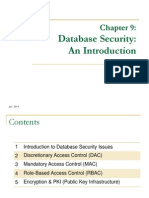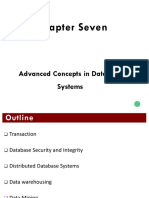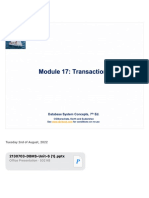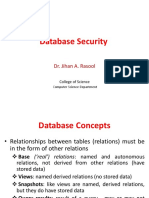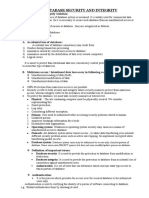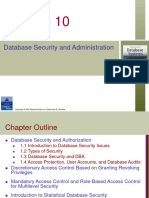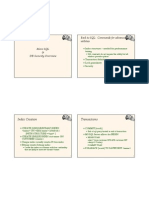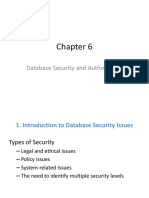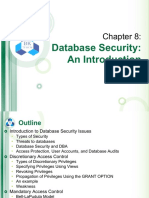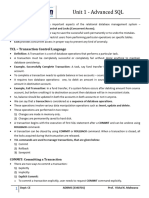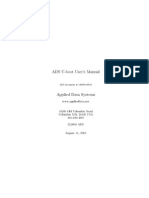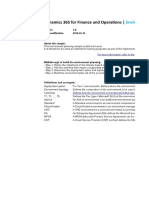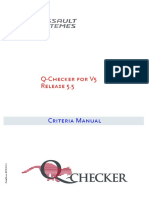0% found this document useful (0 votes)
24 views7 pagesCB3401-Evaluation Shecme & Answer Key
The document outlines the examination structure for a Database Management Systems and Security course for B.E. Computer Science and Engineering students. It includes various parts with questions covering SQL, Entity Relationship Models, functional dependencies, normalization, concurrency control, database security, access control, and SQL commands. The exam consists of multiple-choice questions, descriptive questions, and practical SQL command applications.
Uploaded by
irineclaraCopyright
© © All Rights Reserved
We take content rights seriously. If you suspect this is your content, claim it here.
Available Formats
Download as DOCX, PDF, TXT or read online on Scribd
0% found this document useful (0 votes)
24 views7 pagesCB3401-Evaluation Shecme & Answer Key
The document outlines the examination structure for a Database Management Systems and Security course for B.E. Computer Science and Engineering students. It includes various parts with questions covering SQL, Entity Relationship Models, functional dependencies, normalization, concurrency control, database security, access control, and SQL commands. The exam consists of multiple-choice questions, descriptive questions, and practical SQL command applications.
Uploaded by
irineclaraCopyright
© © All Rights Reserved
We take content rights seriously. If you suspect this is your content, claim it here.
Available Formats
Download as DOCX, PDF, TXT or read online on Scribd
/ 7
